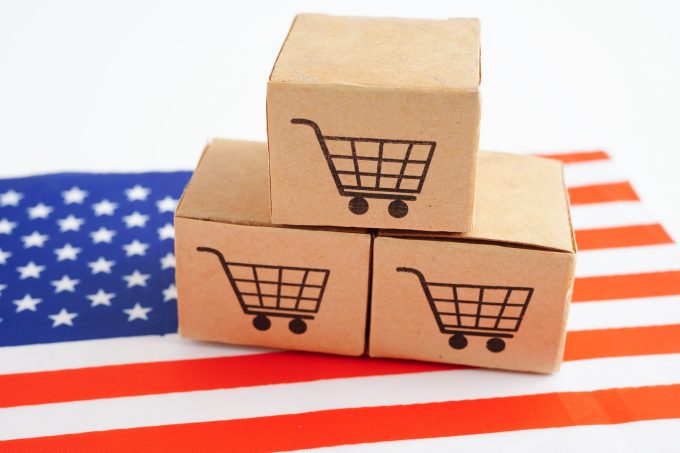Fedex Freight spin-off – Christmas comes early
Santa FedEx
FDX: ABOUT USPS PRIVATISATIONFDX: CCO VIEWFDX: LOWER GUIDANCE FDX: DISRUPTING AIR FREIGHTFDX: FOCUS ON KEY VERTICALFDX: LTL OUTLOOKGXO: NEW LOW LINE: NEW LOW FDX: INDUSTRIAL WOESFDX: HEALTH CHECKFDX: TRADING UPDATEWMT: GREEN WOESFDX: FREIGHT BREAK-UPFDX: WAITING FOR THE SPINHON: BREAK-UP ALLUREDSV: BREACHING SUPPORTVW: BOLT-ON DEALAMZN: TOP PICK
FDX: ABOUT USPS PRIVATISATIONFDX: CCO VIEWFDX: LOWER GUIDANCE FDX: DISRUPTING AIR FREIGHTFDX: FOCUS ON KEY VERTICALFDX: LTL OUTLOOKGXO: NEW LOW LINE: NEW LOW FDX: INDUSTRIAL WOESFDX: HEALTH CHECKFDX: TRADING UPDATEWMT: GREEN WOESFDX: FREIGHT BREAK-UPFDX: WAITING FOR THE SPINHON: BREAK-UP ALLUREDSV: BREACHING SUPPORTVW: BOLT-ON DEALAMZN: TOP PICK

US consumers are expected to step into the breach again to generate higher volumes of cargo in the coming weeks, as industrial traffic remains hobbled by a stuttering manufacturing sector.
Trade statistics for August set off alarm bells as imports lost momentum: at $342.2bn, they were $3.2bn lower than a year earlier.
While this alleviated the trade deficit (exports were $5.3bn higher, year on year), it raised question marks about retail demand, heading into the peak shopping season.
Despite signals of weakening consumer demand, retail in North America has remained in expansion mode, though. The US National Retail Federation (NRF) reported a 0.1% increase in sales for August over July, resulting in 2.3% growth year on year.
According to Oxford Economics, the August drop in imports is unlikely to repeat, thanks to resilient consumer demand and the early end of the east coast port strike. The NRF estimates that containerised imports reached 2.29m teu in September, up 12.9% from September 2023.
It forecast 2.12m teu of imports for October, an annual increase of 3.1%, with the momentum expected to slow in November and December, to 0.9% and 0.2% year-on-year gains, respectively.
Observers are predicting this volume to meet strong consumer demand. Deloitte anticipates retail sales in the peak season to grow 2.3% to 3.3% over last year.
But this growth is going to be eclipsed by ecommerce, which Deloitte’s analysts project to increase between 7% and 9% over last year. And Adobe Analytics sees online sales likely climbing to a new record: they could reach $240.8bn, which would be an increase of 8.4% over last year’s peak ecommerce tally.
This points to robust demand for parcel logistics. UPS management evidently thinks so, as the integrator announced a ‘surge fee’, as well as a number of hikes in surcharges for the peak season, in August.
In an earnings call last month, FedEx chief customer officer Brie Carere expressed confidence that increased surcharges would be largely accepted by the market.
“Customers understand that there’s a lot of pressure on the network,” she said, adding that the peak season window was shorter this year, which condensed seasonal volumes into fewer days.
Notwithstanding these expectations, there have been question marks over consumer willingness to spend. In a recent survey by Bankrate, a consumer financial services company, one-third of respondents said they intended to spend less this year than in 2023.
While inflation has eased, consumers are still feeling the lingering effects, and their eagerness to spend is further affected by declining savings, a weakening job market and record high consumer debt, which rose $27bn in the second quarter, to $1.14trn.
If consumption were to flag seriously, the prospects for the logistics industry would worsen considerably, as the industrial sector has been mired in contraction, with little suggestion of any imminent improvement.
The Institute for Supply Management’s manufacturing purchasing managers’ index (PMI) was flat in September, at a reading of 47.2 (with 50 marking the borderline between contraction and growth), while the new orders index languished at 46.1.
Factory activity also shrank in the euro zone, Japan and Taiwan, while South Korea’s export growth decelerated.
China’s Caixin manufacturing PMI dropped into contraction in September, with a reading of 49.3, down from 50.4 in August. The Chinese government has relied heavily on exports to counter the slump in the housing market and in consumer confidence, which has been a drag on imports.
With a growing number of countries planning anti-dumping measures to shield their domestic producers, there are serious questions over the Chinese export outlook.
A convergence of declining consumption and contraction in the industrial sector would be a serious headwind for the logistics industry.
Comment on this article